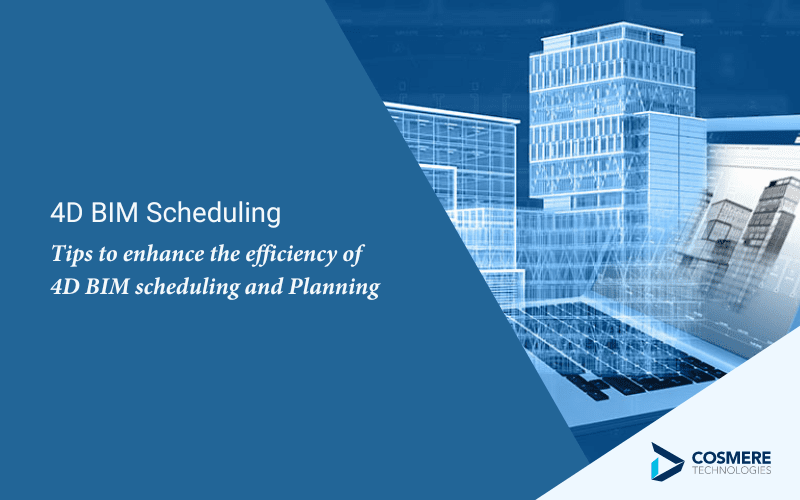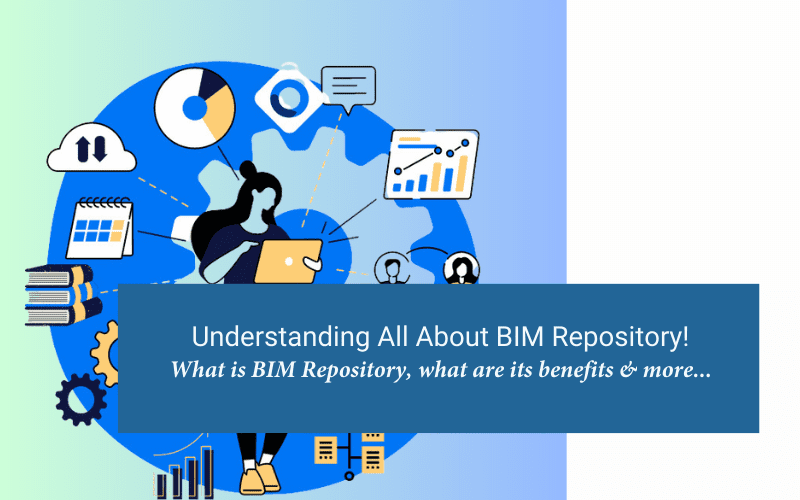We would all agree that BIM has become an integral part of several AEC industries and transportation has not been left behind. With the introduction of CAD and 3D BIM modelling, there is no need for hand-drafting the designs on paper anymore.
Use of BIM in Transportation
Building Information Modeling (BIM) is a digital model (3D, 4D, 5D, or 6D) of the physical and functional characteristics of a construction project which in turn improved collaboration and information exchange among various stakeholders throughout the project lifecycle. While BIM is typically associated with architecture and construction, it also plays a vital role in the transportation sector. Here are some ways BIM is used in transportation:
Design and Visualization
BIM facilitates the creation of 3D models for transportation projects, including roads, bridges, tunnels, railways, and airports. The 3D BIM models help designers and engineers to visualize the entire project with all minor details and identify the potential clashes, and make informed decisions during the design phase.
Improved Collaboration
BIM promotes collaboration among different disciplines and stakeholders involved in a transportation project, such as architects, civil engineers, structural engineers, and contractors. It allows real-time sharing of information and fosters better communication, reducing the chances of errors and conflicts.
Clash Detection and Resolution (BIM in Transportation)
With BIM, clashes between different elements, such as utilities, structures, and roadways, can be identified early in the design process. This clash detection and resolution prevent costly rework during construction and help ensure that the final project is well-coordinated and meets safety standards.
Simulation and Analysis
BIM software often integrates with various simulation tools. Transportation planners and engineers can conduct traffic simulations, pedestrian flow analysis, and environmental impact assessments using BIM data. This analysis aids in optimizing transportation infrastructure designs for efficiency and sustainability.
Quantity Takeoff and Cost Estimation
BIM allows automated quantity takeoff, which helps estimate the required materials and associated costs for a transportation project. This capability streamlines the estimation process and improves cost control throughout the project lifecycle.
Asset Management and Maintenance
BIM data can be used to create a digital database of transportation assets, including detailed information about each component, maintenance schedules, and historical performance data. This digital asset management system enhances maintenance planning and helps prolong the life of transportation infrastructure.
Construction Management
BIM can be integrated with construction management software, enabling project managers to plan and monitor construction activities effectively. It aids in optimizing construction schedules, resource allocation, and progress tracking.
Facilities Management
After the completion of a transportation project, BIM data can be handed over to facility management teams to help with ongoing operations and maintenance. The detailed information in the BIM model supports efficient facility management and aids in future renovation or expansion projects.
BIM Adoption in Transportation
The adoption of Building Information Modeling (BIM) by transportation agencies has been steadily increasing over the years, as the benefits of using BIM become more apparent and the technology becomes more accessible. Here are some key points regarding the adoption of BIM by transportation agencies:
1. Pilot Projects and Demonstrations
Many transportation agencies initially started with pilot projects or demonstrations to explore the potential of BIM in their specific domain. These smaller-scale projects allowed them to assess the benefits and challenges of implementing BIM before adopting it on a larger scale.
2. Government Mandates and Policies
In some regions, government mandates or policies have been put in place to encourage or require transportation agencies to adopt BIM for certain types of projects. Such mandates can accelerate the adoption process and create a standard framework for using BIM in transportation projects.
3. Collaboration and Information Sharing
BIM promotes collaboration among different stakeholders involved in transportation projects, such as designers, engineers, contractors, and facility managers. Transportation agencies recognize the value of improved information sharing and coordination throughout the project lifecycle.
4. Efficiency and Cost Savings
BIM’s ability to detect clashes early in the design phase, optimize construction schedules, and improve asset management leads to increased efficiency and potential cost savings. Transportation agencies are attracted to these benefits as they strive to deliver projects on time and within budget.
5. Data-Driven Decision Making
BIM generates a wealth of data that can be utilized for analysis and informed decision-making. Transportation agencies can leverage this data to assess the impact of design choices, optimize infrastructure performance, and plan for maintenance and future upgrades.
6. Asset Management and Maintenance
BIM’s application extends beyond the construction phase, providing valuable information for asset management and maintenance activities. Transportation agencies can use BIM data to create digital asset inventories, plan maintenance schedules, and streamline operations.
7. Improved Communication with Stakeholders
BIM’s 3D visualization and simulation capabilities enhance communication with stakeholders, including the public, local communities, and other government agencies. Clear and visually appealing representations of projects can help build support and understanding.
8. Training and Skill Development
As BIM adoption becomes more prevalent, transportation agencies have invested in training their staff to develop the necessary skills for working with BIM software and processes. This ensures that the workforce can effectively utilize BIM tools for project delivery.
9. Industry Collaboration and Standards
Transportation agencies often collaborate with industry associations, software vendors, and other agencies to develop and adopt BIM standards specific to the transportation sector. Standardization helps ensure consistency and interoperability among various projects.
10. Long-Term Benefits and Sustainability
BIM’s data-rich approach can contribute to the long-term sustainability of transportation infrastructure. By using BIM data for asset management and future planning, agencies can extend the life of infrastructure and make more informed decisions regarding upgrades and replacements.
In case you wish to learn more about the benefits of BIM in transportation industry or implement it for your agency, simply contact Cosmere Technologies. CosmereTech is one of the renowned BIM companies which are known for offering the best quality BIM services along with many other services like CAD, Pointcloud, Geospatial, etc.
Overall, the adoption of BIM in transportation projects offers numerous benefits, including improved project coordination, reduced errors and rework, enhanced decision-making, and more efficient operations and maintenance. As technology continues to advance, BIM is likely to play an even more significant role in the transportation sector, driving innovation and improving project outcomes.















